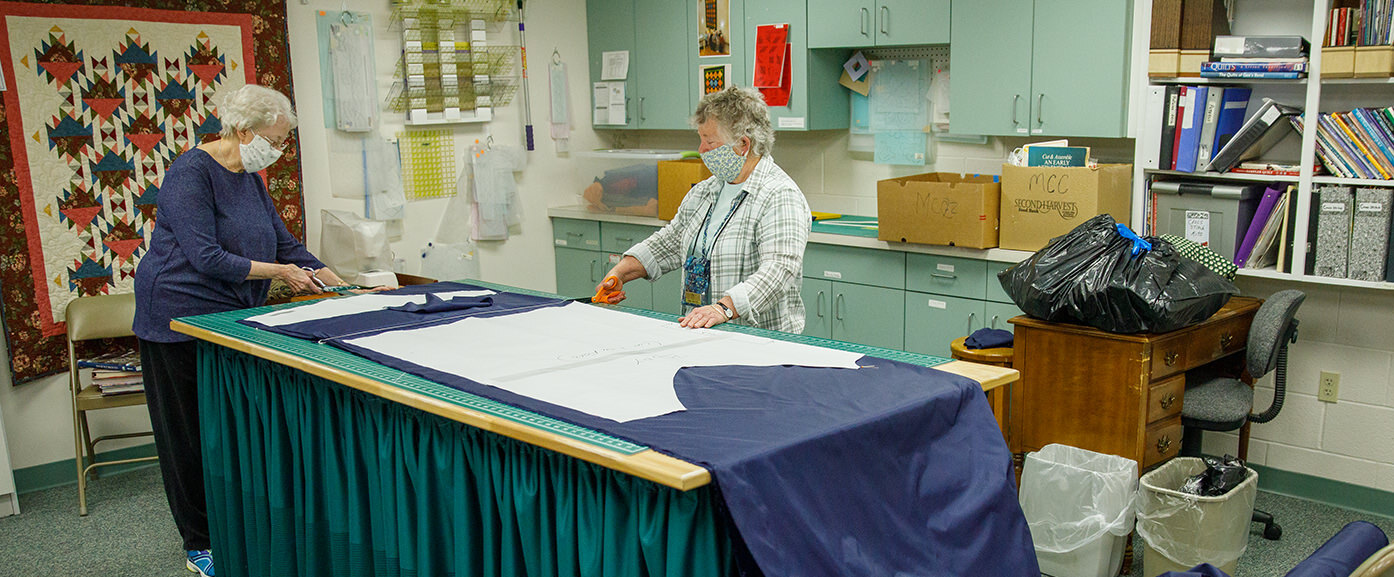
Written by Rachel Hungerford
In the past few months, numbers of latex gloves, face masks and disposable gowns have been dwindling across the nation. Shortages of these items—also known as personal protective equipment, or PPE—have challenged healthcare communities to come up with creative ways to conserve their resources.
Two of these communities found a solution in making reusable medical gowns. Janie Perry, a resident of Watson Run Home Owner’s Association, volunteered herself and three of her friends to help Garden Spot Village increase their supply of washable gowns. Their collective goal is to create 400 gowns in total; right now, the number is slightly greater than 200.
Janie is the mother-in-law of Garden Spot’s infection preventionist Jeannine Perry.
“When Jeannine contacted me, I knew that was one way to help,” says Janie. “I contacted others in my small sewing group, and three others felt they could also make gowns. “
Fortunately, the project only exists as a precaution; Garden Spot is not desperate for PPE. But the collaboration between Garden Spot and Watson Run demonstrates people’s generosity and willingness to help each other.
A PPE Plan
The project started at Garden Spot. CEO Steve Lindsey had heard stories about communities in Philadelphia buying ponchos and raincoats from Home Depot and Tractor Supply just to protect their staff from outbreaks. He didn’t want Garden Spot to have to use that route if the time came.
Weeks earlier, residents had sewed 500 masks for healthcare and 1,500 masks for the Mennonite Disaster Service. Steve wondered if those sewers might be willing to create reusable gowns for Garden Spot’s skilled nursing staff.
Colleen Musselman, director of life enrichment, disassembled one of washable gowns already owned by Garden Spot and crafted a pattern based on the pieces. Then she made a mockup gown with local materials. When skilled nursing approved the design, Steve bought 400 yards of Ottertex Ripstop Durable Water Repellent fabric for the base of the gowns.
Still, the community had to get creative in other ways. In one instance, Colleen went out to buy expensive elastic for the gown’s cuffs and ended up repurposing the elastic band of men’s socks.
Community Collaboration
After the materials were gathered, a team of resident volunteers cut and assembled the fabric into individual kits, while others helped sew. As the first 200 gowns neared completion, the team sat down together. Recognizing the potential for future need, they set a higher goal of 200 gowns more—making the total number 400. That’s when Jeannine reached out to Janie.
“We all feel the same way,” Janie says of her sewing group and the role they play. “It’s our small contribution to help out.”
Community has come together to help community—and when this is all over, we can come together to celebrate, too.
See more blog posts about what we’re doing during this time: Protecting Our Community, 10 Ways to Stay Connected, Boredom Baking